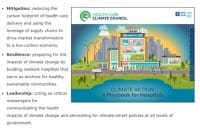Florence Nightingale is usually the first name that comes to mind when nursing is discussed anywhere in the world. This great and inspirational woman was born on May 12, 1820. She played a wide range of roles in nursing, including practitioner, educator, and researcher. As a tribute to her incredible contributions, I created this NURSING acronym for her.
N: Nurse—Florence Nightingale (1820-1910), also known as “The Lady with the Lamp,” was a British nurse who is credited with founding modern nursing. The mother of nursing, whose last name appropriately begins with the first letter of “nurse”, was a pioneer in the profession.
U: Utilizing the environment—Nightingale’s environmental theory defines nursing as “the act of Utilizing the environment of the patient to assist him in his recovery”. This 19th century theory, which states that environment has a strong effect on patient outcomes, also applies to contemporary 21st-century nursing practice. The healthcare system applies Nightingale’s philosophy to optimize patient care by using the environment.
R: Root of nursing theories—Nightingale’s theory serves as the foundation for subsequent nursing theories. According to Tourville and Ingalls, her theory is the trunk of the living tree of nursing theories. I view her philosophy as the root of a thriving tree of nursing theories.
S: Skills—Nightingale realized that only a good education could lead to good skill and practice. Nightingale used tools such as case studies to teach the practice of nursing. Her nurse training model, which is based on theoretical principles and practical practice for mastery of skills, it serves as a blueprint for early nurse education.
I: Inspiring—Nightingale is probably the world’s most inspiring nurse and has had the greatest influence on modern nursing. She is an inspiration to nurses because of the significant impact she had on how successful nursing can be. Nightingale elevated nursing to a prestigious and independent profession. She also advocated for the interests of nurses and patients’ rights.
N: Notes on Nursing: What It Is, and What It Is Not, written by Nightingale, nursing’s first theorist/researcher, was first published in England in 1859 and the United States in 1860. It’s often viewed as nursing’s first textbook and regarded as Nightingale’s gift to everyone in the nursing profession.
G: God and goodness—Nightingale felt she had received a call from god to serve and she wanted to be a nurse so she could do good to help patients. God’s name appears 14 times in Notes on Nursing in various places. Nursing, she wrote, is a priceless gift from god to care for patients.
References
Alligood MR. Nursing Theorists and Their Work. Elsevier Health Sciences; 2017.
Gilbert HA. Florence Nightingale’s Environmental Theory and its influence on contemporary infection control. Collegian. 2020;27(6):626-33.
Karimi H, Alavi NM. Florence Nightingale: The mother of nursing. Nurs Midwifery Stud. 2015;4(2):e29475.
Kozier B. Fundamentals of Nursing: Concepts, Process and Practice. Pearson Education; 2008.
McDonald L. Florence Nightingale and Mary Seacole on nursing and health care. J Adv Nurs. 2014;70(6):1436-44.
Magpantay-Monroe ER. Exploring the emotional intelligence of Florence Nightingale. Asia Pac J Oncol Nurs. 2015;2(2):107-11.
Nightingale F. Notes on Nursing: What It Is, and What It Is Not. Lippincott Williams & Wilkins; 1992.
Shetty AP. Florence Nightingale: The queen of nurses. Archives Med Health Sciences. 2016;4(1):144.
Tourville C, Ingalls K. The living tree of nursing theories. Nurs Forum. 2003;38(3):21-30.
Omar Almahmoud is a lecturer for the nursing department at Birzeit University, Palestine, and a PhD student in the nursing philosophy program at the School of Nursing at the University of Jordan. The author would like to thank Professor Lubna Abushaikha at the School of Nursing at the University of Jordan for valuable and constructive comments.


















